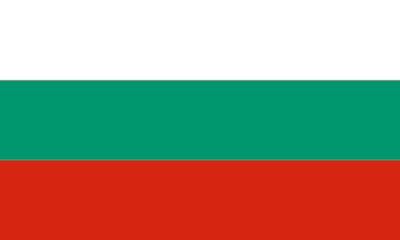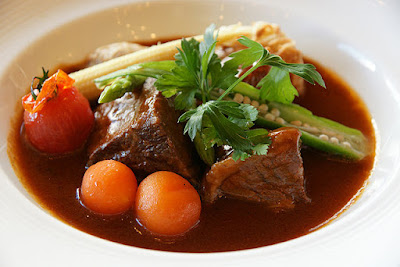The Bulgarian flag: a symbol of history, unity and national pride
Flags are powerful symbols that create a sense of national identity, unity, and history. One such symbol that holds deep significance for the people of Bulgaria is their national flag. The design and colors of the Bulgarian flag have evolved over the centuries, reflecting the country's dynamic past and its journey towards independence, freedom and prosperity. In this article, we'll explore the fascinating history and symbolism behind the Bulgarian flag, discovering how it remains a cherished symbol of unity and pride for the Bulgarian people.
Origin and development
The origin of the Bulgarian flag can be traced back to the First Bulgarian Empire in the 7th century. Historical records suggest that the earliest flags used by Bulgarian rulers were simple, monochromatic banners representing the ruling family or dynasty. Over time, the flag evolved and included various symbols including the cross, which played an important role in the adoption of Christianity as the state religion.
During Ottoman rule (1396–1878), Bulgaria lost its independence, and the use of a distinctive national flag was suppressed. However, even during this dark period of history, the Bulgarian people maintained their cultural and historical identity through various subtle symbols and covert acts of resistance.
Independence and modern flag
The long-awaited struggle for independence was realized in 1908 when Bulgaria finally broke free from the Ottoman Empire. The nation celebrated its new sovereignty by adopting the modern national flag. The design had three horizontal stripes – white at the top, green in the middle and red at the bottom. This tricolor representation has remained the foundation of the Bulgarian flag ever since.
Symbolism of colors
Each color of the Bulgarian flag holds deep symbolism, reflecting the country's values and aspirations:
White: At the top, the white stripe represents peace and freedom. It symbolizes the aspiration of a peaceful and harmonious society, where all citizens can enjoy freedom and equality.
Green: The middle green stripe symbolizes the fertile landscape and green nature of Bulgaria. It represents growth, prosperity and hope for a bright future.
Red: The lower red stripe symbolizes the courage and resilience of the Bulgarian people during their turbulent history. It reminds us of the blood shed in defense of the freedom of the country.
National pride and unity
The Bulgarian flag serves as a rallying point for national pride and unity, especially during festivities, sporting events, and public gatherings. The flag is displayed prominently on official buildings, schools, public squares and on the uniforms of athletes representing the country in international competitions.
National Holidays and Celebrations
Many national holidays and important dates in the history of Bulgaria are marked by the widespread display of the flag. Examples include Bulgaria's National Day (3 March), which celebrates the country's liberation from Ottoman rule, and Independence Day (22 September), which celebrates the formal establishment of the Third Bulgarian State in 1908.
The Bulgarian flag is much more than just a piece of cloth; It is a symbol that symbolizes the struggle, triumph and aspirations of the Bulgarian people throughout history. Its tricolor design and deep symbolism make it a powerful representation of national unity, pride and identity. As Bulgaria moves forward, the flag will be a constant reminder of its rich heritage and the strength of its people.
Bulgarian cuisine is a delightful blend of flavors influenced by its geographical location and its rich history. Traditional Bulgarian cuisine incorporates a variety of fresh and locally sourced ingredients, resulting in hearty and delicious meals. Here are some notable foods from Bulgaria:
foods of Bulgaria
- Shopska Salad: This refreshing salad is a staple of Bulgarian cuisine. It consists of sliced tomatoes, cucumbers, onions and peppers, topped with grated white cheese and drizzled with olive oil and vinegar. It is a great appetizer or side dish.
- Bulgarian Yogurt: Bulgaria is famous for its yogurt, which is thick, creamy and rich in probiotics. It is made from a unique combination of Lactobacillus bulgaricus and Streptococcus thermophilus cultures, which give it a distinctive flavor and texture.
- Banitsa: A popular breakfast dish or snack, banitsa is a savory pastry made from layers of filo dough and topped with cheese (usually feta) and eggs. It can also be prepared with spinach, pumpkin or other ingredients. Banitsa is often enjoyed with curd.
- Kababache: Similar to a small sausage or kebab, kababache is made from minced meat (usually a mixture of pork and beef) with various spices and herbs. It is grilled and served with rice or potatoes and a fresh salad.
- Tarter: This cold soup is perfect for hot summer days. It is made from cucumbers, yogurt, garlic, dill, and walnuts. Tarter is both refreshing and nutritious, and its tangy flavor makes it a favorite among locals and visitors alike.
- Moussaka: A classic Bulgarian dish of Balkan origin, moussaka is a layered casserole made from potatoes, minced meat (usually pork or beef) and tomatoes, topped with a creamy mixture of eggs and yogurt. It is deliciously cooked and served hot.
- Lutenitsa: A beloved Bulgarian spread, lutenitsa is made from roasted red peppers, tomatoes, and eggplant, cooked with garlic, chili peppers, and various spices. It has a rich and pungent flavor and is often eaten on bread or as a condiment with grilled meats.
- Tarhana: Tarhana is a traditional Bulgarian soup made from fermented yogurt, flour, and vegetables. It is cooked with spices and herbs, resulting in a thick and nutritious soup that is especially popular during the winter months.
- Shkembe Chorba: This hearty tripe soup is a favorite among Bulgarians, especially as a hangover cure. It is made from boiled tripe and is served with garlic, vinegar and cayenne pepper to enhance the flavor.
- Tikvenik: Tikvenik is a delicious Bulgarian dessert made from thin layers of phyllo pastry filled with a mixture of sweetened grated pumpkin and walnuts, sugar and cinnamon. It is cooked till golden and served with a sprinkling of powdered sugar.


Comments
Post a Comment